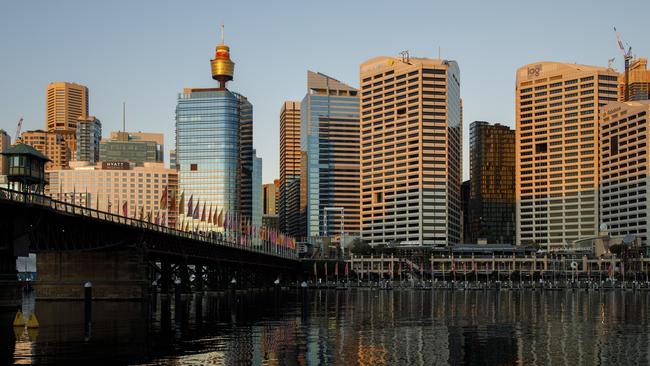Commercial property bounce back after steep 2020 dive
While hit hard by the pandemic, the commercial property market could bounce back faster than it did after the GFC, JLL believes.

Commercial property volumes could plunge to about a third of the record levels seen last year as the market slowly unfreezes from the coronavirus crisis.
The dramatic restrictions imposed on economic activity in March effectively derailed about a dozen major deals around Australia, with values hit particularly hard in major regional malls, which are all but unsaleable until retail chains pay rent again.
But there are signs of recovery in the logistics market and even for select office towers in capital cities, according to real estate agency JLL, which argues the market is finding its feet after the crisis.
There has been a run of recent deals with Dexus selling a $530m Sydney tower at book value and Macquarie Group engaging with Investa to sell its planned $800m building above Martin Place metro station. On the logistics side Charter Hall, backed by Allianz, snapped up the Aldi portfolio for $648m.
A new report from JLL firm argues that there will be an earlier shift back towards pre-crisis transaction volumes for commercial property - once COVID-19 is - contained than experienced in the wake of the GFC.
JLL head of capital markets, Australia, Fergal Harris said the transaction volumes were likely to fall sharply in 2020, but the unprecedented policy measures that had provided support to global equity markets, limited the “denominator effect” relative to the GFC in 2008-09.
“The pace of the economic recovery will have significant implications for commercial property,“ he said, predicting that transaction volumes in 2021 and 2022 would depend on an economic recovery and the performance of other asset classes.
Prime grade industrial and logistics, and office towers, are proving most resilient sectors but Mr Harris said the greatest income risk was in the retail sector, while secondary grade assets in all areas were expected to experience higher vacancy and income challenges.
“The main shift we are likely to see in pricing relates to secondary assets. Lending criteria is expected to become more onerous with financiers easing back loan-to-value ratios and seeking higher interest coverage ratios for secondary grade assets,“ he said.
In 2008, Australian commercial property transaction volumes shrank to just 41 per cent of levels recorded in 2007. If this was followed this year then 2020 would see commercial property transaction volumes of $12.5bn to $16.5bn, well off their Australian record high in 2019 at $36bn.
Based on the current pipeline and a few potential mega-deals which inflated last year, JLL estimates transaction volumes for 2020 are likely to be lower and in the range of $10-$12bn.
JLL head of research Andrew Ballantyne said after the financial crisis it took until 2012 for transaction volumes to recover to 2007 levels. Part of this was explained by the denominator effect – a correction in equities leading to an overweight position in real assets.
That recovery in direct property transaction volumes followed a similar trajectory to the S&P 500, which returned to its 2007 peak in early 2013.
“While equity markets have remained volatile, the rebound post the March correction has happened relatively quickly. As a result, the denominator effect is less relevant this time and we may have a shorter pathway back to pre-crisis transaction volume levels,” Mr Ballantyne said.
. JLL is expecting that pension funds and global investors will make higher allocations to real assets and tilt their portfolios towards the Asia Pacific region.
Mr Ballantyne noted the depreciation of the Australian dollar against a number of major currencies made the entry point for offshore capital attractive.
The smaller end has remained surprisingly active.
Vanessa Rader, head of research, Ray White Commercial tracks sales, including the volumes in the sub $50m commercial market notably for the private investor market, which has remained strong.
“Low interest rates and investor concern regarding superannuation coupled with the limited quality stock available on the market, has resulted in rising registered bidders at auctions and prices exceeding expectations for many vendors as competition levels increase,” she said.
Ms Rader expects interest from private investors to continue on the back of share market volatility both domestically and internationally.
Ray White Commercial has tracked weekly commercial sales in the sub $50m price range since the beginning of 2020.
Over the first half of 2020 it monitored 4,267 commercial deals, representing more than $9.6bn, down from $16bn recorded over the same period in 2019, however the average deal size has grown in 2020 to average $2.3m up from $2.1m.
“We have seen dominance of industrial followed by office and retail despite the commentary on the future death of these assets,” Ms Rader said.








To join the conversation, please log in. Don't have an account? Register
Join the conversation, you are commenting as Logout